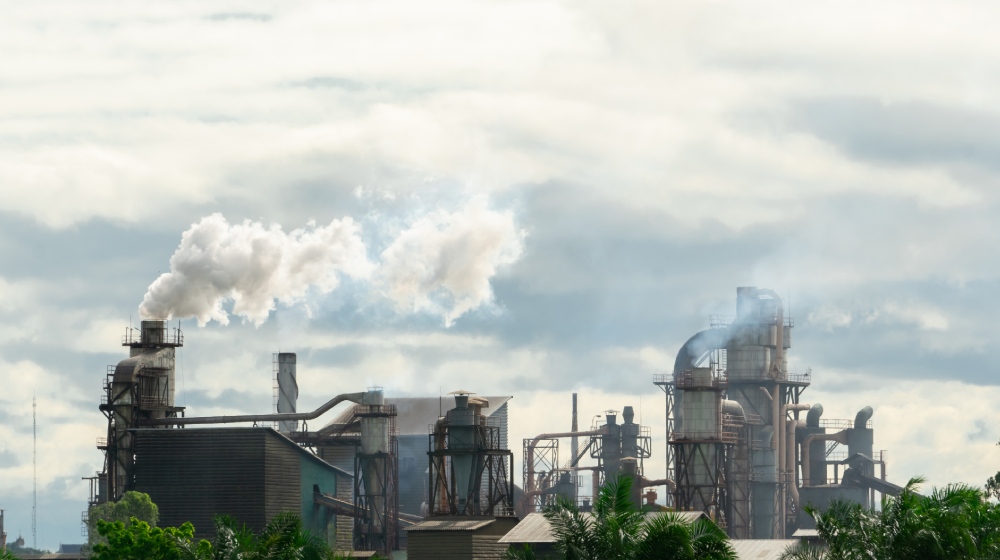The United Arab Emirates (UAE) is an example of progress in the Middle East, where new ideas and old ways of doing things meet. But there is a very important issue that lies beneath the bright skyscrapers and busy cities: how agriculture and the food supply chain business affect the environment. Greenhouse gas emissions from farming in the UAE are complicated, and this blog tries to explain them while also highlighting environmentally friendly projects.
We will also look into the specific problems that Gaza faces, giving you a look at how greenhouse gases change in two different places.
How UAE and Gaza are adding to CO2 emissions?
During the first 35 days of heightened combat, emissions equal to about 60.304 million tonnes of CO2 equivalents were released. The number comes from many places, like using fuel, weapons, Trinitrotoluene (TNT), destroying buildings, and fixing up public infrastructure. Most of these emissions come from repairing and rebuilding damaged infrastructure.
They are a stark reminder of the environmental effects of war that are often ignored. Also, calculations show that if the fight goes on for a year, as Israeli troops have said they think it will, the total amount of CO2 released could hit an alarming 629 million tons. The results of this study illustrate how important it is to consider natural factors in efforts to end conflicts and rebuild after a war.
Like other conflicts before it, this one needs a lot of fossil fuel, which pollutes the environment and releases too much carbon into the air. Numbers from before the war say that 25,000 tonnes of bombs were dropped on Gaza in the first few weeks. As a result, this would cause carbon emissions equal to the amount of energy used by about 2,300 homes or the greenhouse gas (GHG) emissions from about 4,600 passenger cars in a year.
Common Reasons for GHG Emissions in UAE and Gaza:
Around the world, fossil fuels are used by the military to power planes, tanks, and weapons. This is responsible for about 5.5% of all worldwide emissions. The number could be higher because the military doesn’t have to report their carbon pollution because doing so could put national security at risk.
1. The farming scene in the UAE:
Finding a balance between growth and environmental impact UAE. The fast-growing population of the UAE depends on its strong farm sector to make sure there is enough food for everyone. But this growth has effects on the world. The country’s carbon footprint is mostly made up of agricultural operations like raising animals and growing crops.
2. A greener future through Eco-friendly agriculture practices
The new and environmentally friendly ways that farmland and the food supply chain are being used, focus on the UAE’s progress. Check out how the UAE is using research and technology to lower emissions and make the country more environmentally friendly. For example, look into how they are using vertical farms in cities and new ways to handle waste. These projects are making a difference in the real world, as shown by case studies and success stories.
3. “Green Challenges in Gaza: Getting Around Environmental Limits”
Few resources, unstable governments, and limited access to technology make it hard to use sustainable agriculture practices. The blog will shed light on how these problems affect greenhouse gas pollution, showing how important it is to find new ways to solve Gaza’s problems and work with people from other countries.
4. Strategies that work together in the UAE and Gaza that have an effect on the whole world
Foreign partnerships and collaboration can help cut down on greenhouse gas emissions. Find out how the UAE and Gaza are working with people around the world to find solutions that go beyond borders. They are doing this by sharing information, getting help with technology, or working together. This part will stress how important it is for everyone to share their duty in the fight against climate change by showing how environmental problems are linked.
Plans Ahead for UAE and Gaza

The UAE’s new NDC says they want to cut their emissions to 206 MtCO2e by 2030, which is 18% less than what they are now and 4% less than the goal they set in 2022. This goal does not include land use, land use change, or forests. Compared to a 1.5°C-aligned domestic pathway, the CAT says this goal is “Almost sufficient” but “Critically insufficient” when looking at the UAE’s fair share.
The UAE will not even come close to meeting its NDC, so new plans to cut emissions will have to be put in place. “Critically Insufficient” is how the CAT describes the UAE’s policies and deeds. With less than seven years to go, the UAE’s current policies are still not in line with its NDC goal or a path that is suitable with 1.5°C.
Wrapping Up
In the end, “Sowing Sustainability” tries to connect the stories of greenhouse gas emissions from Gaza and the UAE’s farmland and food supply chains. While the UAE tries to follow sustainable agriculture practices while balancing progress with environmentally friendly practices such as sustainable farming, Gaza has its own problems that need help and attention from all over the world. Through this study, we hope to bring more attention to the issue, start conversations, and encourage everyone to work together to make the world a greener place.
Tanya A Mishra, Technical Content Writer & Marketer at farmtoplate.io (specialising in MENA Tech Landscape). She has been working towards crafting insightful content on topics like Blockchain, Agritech, AI and many more.
